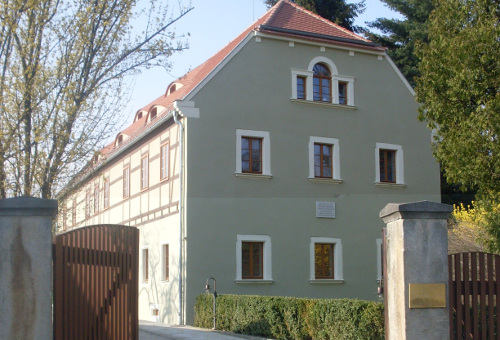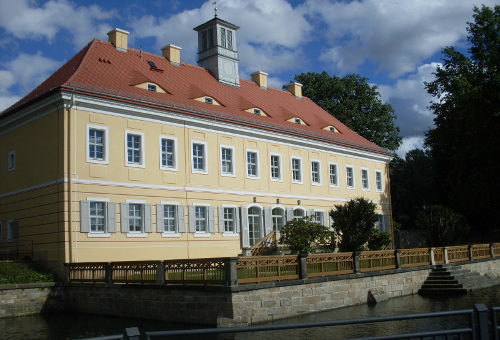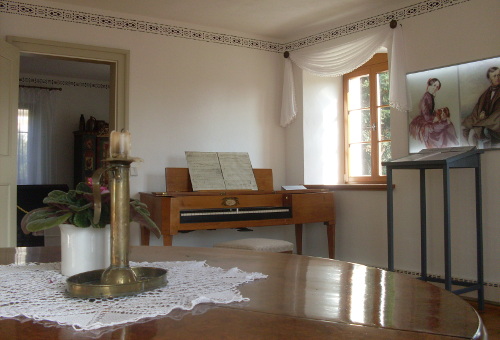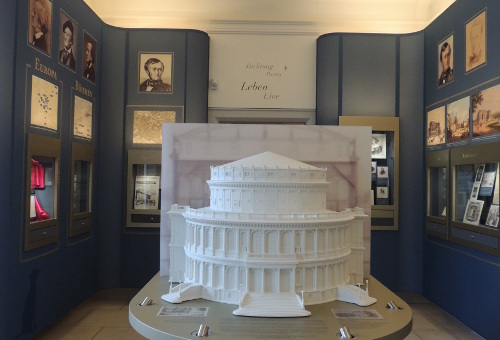





Jagdschloss mit multimedialer Ausstellung, Tschaikowskiplatz 7
Lohengrinhaus, Richard-Wagner-Straße 6
01796 Pirna OT Graupa
Telefon/Fax +49.3501.461965-0
Web: www.wagnerstaetten.de
E-Mail: wagnerstaetten@pirna.de
Montag, Mittwoch bis Freitag: 11-17 Uhr
Samstag und Sonntag:
10-17 Uhr
Die Richard-Wagner-Stätten Graupa bestehen seit 2013 aus dem museumsgeschichtlich älteren so genannten Lohengrinhaus und dem Jagdschloss mit modern gestalteter Wagner-Ausstellung. In Erinnerung an Richard Wagners Aufenthalt im Schäferschen Bauerngut im Sommer 1846 richtete der Leipziger Max Gaßmeyer hier 1907 einen Gedenkraum ein,die Keimzelle der heutigen Richard-Wagner-Stätten. Nach grundlegender Gebäudesanierung 2006/07 wurden neben einer informativen Ausstellung zu der hier kompositorisch angelegten Oper „Lohengrin“ die Wohnräume gestaltet, die Wagner mit seiner Frau Minna bewohnte. Hörstationen infomieren über die Wanderungen, die Wagner in die Umgebung unternahm sowie über die Gäste, die Wagner in Graupa empfing, unter ihnen der damals 16-jährige Hans von Bülow.
Die Ausstellung im Schloss unter dem Aspekt „Keine Angst vor Wagner – Oper ist ein Erlebnis“ präsentiert sich atmosphärisch-emotional in einer Symbiose von konventionellen und modernen Ausstellungsmethoden. Der biografische Schwerpunkt liegt auf Leben und Werk der frühen Schaffensperiode in Sachsen und schließt Ausbicke in die Ausformung des Werkes in der zweiten Lebenshälfte ein. Spezielle Themenräume widmen sich den Operndichtungen und der Komposition Wagners. Anhand von Porträts und Hörbeispielen werden musikalische Vorbilder und Inspiratoren vorgestellt. Ein Ausflug in das Thema Filmmusik macht deutlich, welche Bedeutung Wagners Musik für dieses Genre erlangte. Ein Holografietheater sowie ein virtueller Orchestergraben vermitteln in moderner Form Eindrücke vom Wagnerschen Gesamtkunstwerk. Im Rahmen des Ausstellungsbesuchs ist ein Blick in den Veranstaltungssaal möglich, der dank seiner technischen Ausstattung neben Konzerten auch für Filmvorführungen, Tagungen und Empfänge genutzt werden kann. Abschließend lädt der Schlosspark mit seinen Informationstafeln zu Wagners Lebensstationen zu einem Besuch ein. Mit genügend Zeit ist darüber hinaus ein Abstecher zum weltweit größten Wagner-Denkmal im Liebthaler Grund (ca. 5 km von Graupa entfernt) zu empfehlen.
Deutschland verfügt über musikalische Traditionen und Nachlässe von außerordentlichem Wert: Händel, Schütz und Bach, Beethoven, Mendelssohn, Schumann, Brahms und Wagner sind - um nur einige Namen zu nennen - weltweit bekannte und geschätzte Komponisten. Ihr Wirken hat eine einzigartige Musiklandschaft wesentlich mitgeformt.
Zahlreiche Orchester, Chöre und Ensembles, renommierte Musikfestivals und -reihen, Musikerhäuser mit Museen, öffentliche Archive und Bibliotheken, aber auch private Sammlungen bewahren ihr musikalisches Erbe.
Diesen unschätzbaren Fundus gilt es immer wieder neu zu beleben und für die Gegenwart zu erschließen. Den in der Arbeitsgemeinschaft Musikermuseen Deutschlands zuusammengeschlossenen Häusern kommt dabei eine wichtige Rolle zu. In ihnen begegnen wir dem Werk von Musikern und Komponisten, die die Kulturnation Deutschland außerordentlich bereichert haben. Über das individuelle Portrait, über die Vermittlung des einzelnen Œuvres hinaus tragen die Musikermuseen aber auch zur Pflege musikalischer Tradition insgesamt bei. Die vorliegende Broschüre unterstreicht diesen Aspekt der Zusammenschau, und sie lädt zu einer Reise in die Musikgeschichte Deutschlands ein. Ich wünsche diesem Reiseführer regen Gebrauch und eine große Resonanz.
Bernd Neumann, MdB
Staatsminister bei der Bundeskanzlerin
Der Beauftragte der Bundesregierung für Kultur und Medien
Zitat: Vorwort zur Broschüre der Arbeitsgemeinschaft "Musikermuseen in Deutschland", 2007.